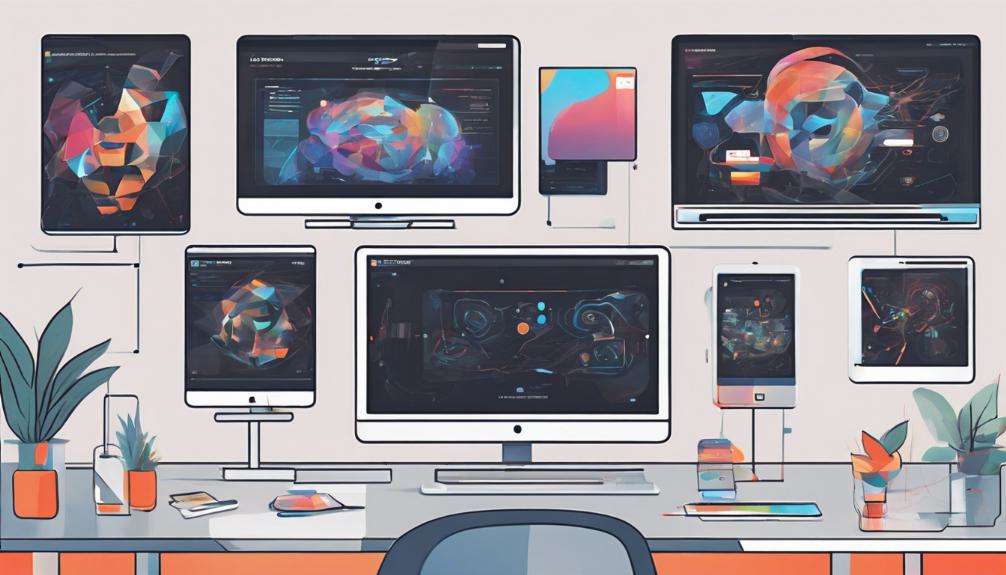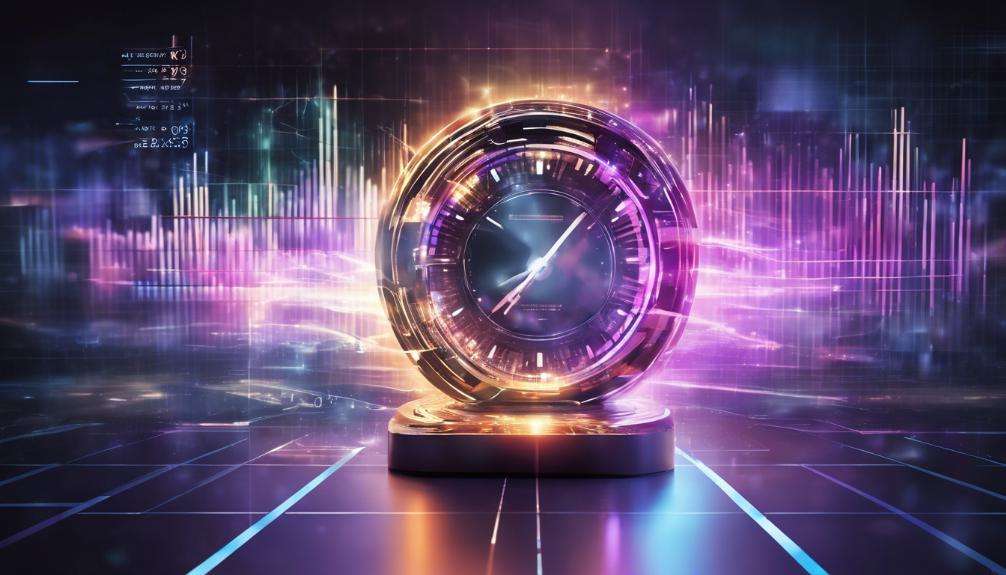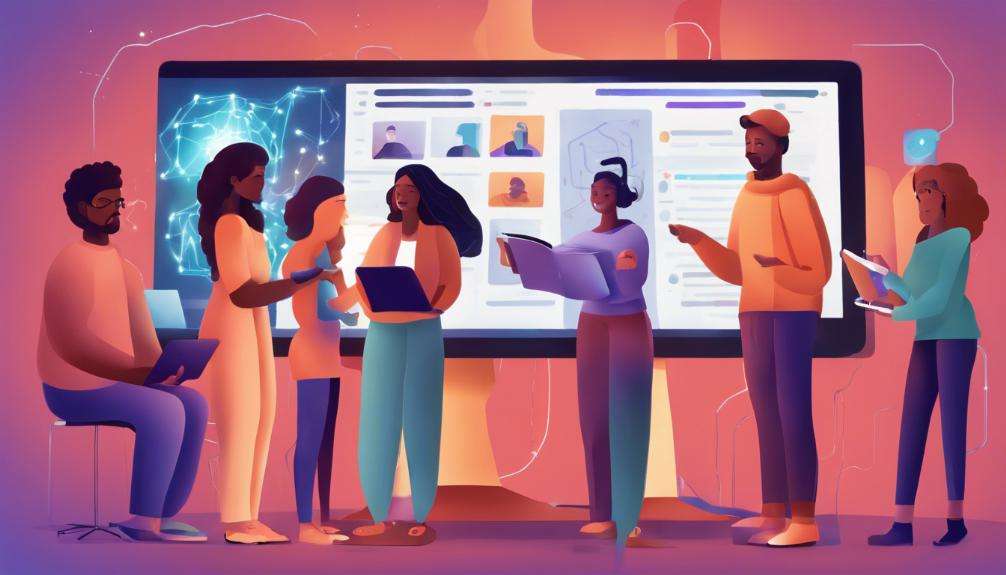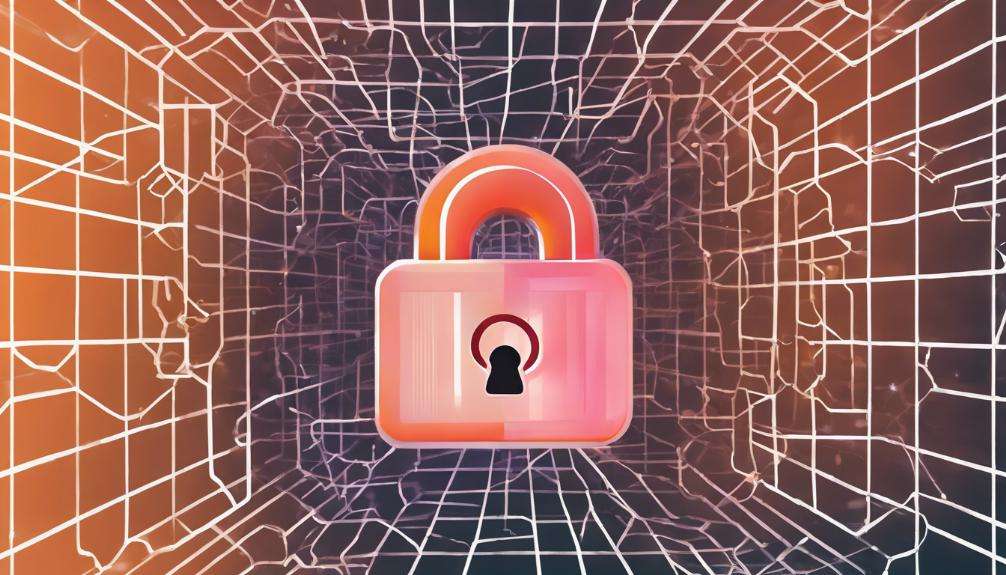Table of Contents
I've sifted through various AI image generators, focusing on aspects like image quality, user interface, and versatility. The best ones offer crisp visuals and intuitive navigation, making them ideal for a wide range of creative needs. Cost-wise, options range from affordable subscriptions to more premium services, catering to occasional or frequent usage. Most importantly, these generators are fast and packed with features that streamline the creative process, ensuring minimal disruption. Considering the ever-changing landscape of AI artistry, the right tool can greatly enhance your work. Curious about which specific generator fits your project perfectly? Let's uncover that together.
Main Talking Points
- Evaluate image quality based on clarity, detail, and color accuracy to ensure appealing visuals.
- Consider interface user-friendliness, real-time feedback, and processing efficiency for better productivity.
- Assess the cost, checking if subscription models or pay-as-you-go options suit your budget and usage frequency.
- Ensure the tool offers versatility in features, supporting various styles and creative demands.
- Verify compatibility with other software and robust data security measures to safeguard user information.
Overview of AI Image Generators
AI image generators typically use advanced algorithms to transform textual descriptions into vivid visual content. I've found that they rely on a variety of technologies, but most are built on a foundation of machine learning, particularly deep learning models like Generative Adversarial Networks (GANs) and Variational Autoencoders (VAEs). These technologies empower the generators to create images that are increasingly complex and detailed.
As I've explored different tools, I've noticed that they require specific input to function effectively. This usually involves a detailed text prompt which the AI uses as a guideline for generating the visual. The more detailed the description, the better the AI can perform in producing an image that closely aligns with my expectations. For example, if I input a prompt describing a 'sunset over a calm sea,' the AI uses its trained algorithms to interpret these elements and digitally paint the scene.
Understanding the process, I've also learned that these generators aren't just creating random images; they're weaving together learned patterns and data from numerous training images. This is why they can handle a wide range of requests and styles, from realistic photos to abstract art, adapting to various creative needs.
Evaluating Image Quality
When evaluating the quality of images produced by AI, it's important to consider factors like clarity, detail, and color accuracy. I've found that these elements can significantly impact the visual appeal and usability of generated images. To illustrate, I'll provide a simple comparison table based on my observations of several AI image generators.
Here's the table illustrating key quality aspects:
| Aspect | Importance |
|---|---|
| Clarity | Ensures image is crisp and recognizable, important for both artistic and practical uses. |
| Detail | Critical for the depth and texture, influencing how realistic or expressive an image appears. |
| Color Accuracy | Essential for maintaining the intended mood and authenticity, particularly in branding or artistic contexts. |
| Consistency | Important for series or thematic images, ensuring all outputs maintain a consistent quality. |
| Resolution | High resolution is necessary for printing purposes or detailed digital viewing. |
This table helps clarify why each aspect is significant when evaluating AI-generated images. I've found that overlooking even one of these can lead to disappointing results, whether it's a blurry image, off colors, or inconsistent outputs across a project.
User Interface and Experience

How does the user interface of an AI image generator affect my interaction and productivity with the tool? It's all about how intuitively I can navigate through the system. A clear, well-designed interface doesn't just look good—it makes it easier for me to understand and utilize the tool's features effectively. When I'm able to find functions quickly and understand tool capabilities without poring over a manual, I'm not only saving time, but I'm also more likely to experiment with different settings and features, enhancing my creative output.
For example, if I'm using a tool that allows me to tweak image dimensions, style, and color themes through simple sliders or dropdown menus, I can iterate designs much quicker. This real-time feedback is essential for fine-tuning visuals to my exact needs.
Moreover, a responsive interface is vital. There's nothing more frustrating than dealing with laggy software when I'm in a flow state. Efficiency here means that the tool works with me, not against me. It should handle high-resolution images swiftly and provide shortcuts that minimize my navigation time, keeping my focus sharp and my projects moving forward smoothly.
Cost and Subscription Models
While a user-friendly interface boosts productivity, it's also important to take into account the impact of different cost and subscription models on my overall experience with an AI image generator. These models can vary greatly, affecting not just my wallet but how I use the tool for my projects.
Firstly, many AI image generators offer a free tier, which is great for testing capabilities without financial commitment. However, I've noticed these free versions often come with limitations like lower resolution outputs or watermarks, which aren't suitable for professional use. Then there are pay-as-you-go and subscription models. Pay-as-you-go allows me to only pay for what I use, making it cost-effective for infrequent needs. But for regular use, a subscription model usually proves more cost-effective.
Subscriptions often come with different tiers, offering more features, higher resolutions, and increased usage limits as I scale up. It's essential for me to evaluate each tier against my specific needs to find the best value. High-tier subscriptions can be expensive, but they're typically justified by the extensive features and allowances they include. I always have to balance the cost against the expected usage to determine the most sensible plan for my circumstances.
Speed and Performance Metrics

Speed and performance metrics are essential in determining how quickly I can bring my creative visions to life with an AI image generator. When I'm selecting a tool, I'm not just looking for one that meets my aesthetic needs but also one that can keep pace with my workflow. The time it takes from inputting my idea to receiving the final image is critical, especially when I'm working under tight deadlines.
I've found that the best AI image generators not only have fast processing speeds but also maintain high-quality outputs, regardless of the complexity of my requests. It's important for me that the tool I use minimizes the waiting time for an image to be rendered. I've observed that some tools offer batch processing capabilities, which reduces total processing time when I'm working on multiple images at once.
Moreover, the stability of the software also plays an important role. It's frustrating when the tool crashes mid-process. Therefore, I always check the uptime statistics and user reviews focusing on performance reliability before deciding on a service. This guarantees that I'm using a robust tool that won't let me down when I need it most.
Versatility and Features
Beyond performance, I also assess the range of features and the versatility of an AI image generator to guarantee it meets various creative demands. It's essential that the tool isn't just fast, but also flexible enough to adapt to different artistic visions and technical requirements.
Here's a breakdown of key features across top AI image generators:
| Feature | Generator A | Generator B | Generator C |
|---|---|---|---|
| Style Transfer | Yes | Yes | No |
| High-Resolution Output | Up to 4K | Up to 1080p | Up to 720p |
| Batch Processing | No | Yes | Yes |
| Custom Style Integration | Limited | No | Yes |
I've found that while some generators excel in style transfer, others might offer better resolution or batch processing capabilities. This variety allows users like me to pick a tool that best aligns with our specific project needs. For instance, if I'm working on a large-scale digital mural, high-resolution output becomes a priority over style diversity. Conversely, for a project requiring a unique aesthetic, a generator with robust custom style options might be more appropriate. Making the right choice heavily depends on understanding these features and how they align with creative goals.
Support and Community Resources

Support and community resources are vital for maximizing the utility of AI image generators. As someone who's dived deep into the world of AI-driven art creation, I've found that robust support systems and active community forums are pivotal. They not only help troubleshoot common issues but also share creative uses and hacks that aren't immediately obvious.
When I first started using AI image generators, I was often stumped by errors and glitches. It was the quick responses and detailed guides from the support teams that got me back on track. More so, the community forums and social media groups served as an invaluable resource. Here, I could connect with other creators, exchange tips, and even collaborate on projects. This interaction has been essential in refining my skills and expanding my creative horizons.
Moreover, regular webinars and tutorial videos provided by these platforms have helped me understand complex features that initially seemed intimidating. These resources are designed to help users like me get the most out of the tool, enhancing both our efficiency and creativity.
In essence, the support and community surrounding an AI image generator can profoundly impact your user experience. They transform what could be a solitary endeavor into a dynamic learning and creating process.
Compatibility With Other Software
How well does an AI image generator integrate with existing creative software tools? In my experience, the degree of compatibility can greatly impact the workflow and productivity in creative projects. As I've navigated through various AI image generators, I've noticed that the best ones offer seamless integration capabilities that really make a difference.
Here's what I've found to be essential:
- Plugin Availability: Some AI tools have dedicated plugins for popular design software like Adobe Photoshop or Illustrator, which makes it easier to import and export images directly within the projects.
- API Access: Generators that provide robust APIs allow for more flexible integration with custom software environments, which is great for tailored workflow setups.
- File Compatibility: The ability to handle various file formats (like PSD, SVG, and TIFF) ensures that images can be easily moved between different applications without losing quality or metadata.
- Real-time Collaboration: Certain AI tools support cloud-based platforms, enabling multiple users to collaborate on projects in real time, which is incredibly beneficial in team settings.
- Batch Processing: Tools that can process multiple images simultaneously through the same software ecosystem save time and maintain consistency across large projects.
Compatibility isn't just a convenience; it's essential for efficient creative work.
Privacy and Data Security

While considering the integration abilities of AI image generators, I'm equally concerned about how these tools handle privacy and data security. When I upload my personal photos or sensitive data to these platforms, I need to be sure that my information is protected and won't be misused or accessed without my permission.
Most reputable AI image generators use encryption and robust security measures to protect user data, but that's not always enough to ease my worries. I've learned that it's essential to read the privacy policies of these services carefully. They often detail how data is collected, used, and stored. I look for platforms that commit to not sharing or selling data to third parties, which adds an extra layer of trust.
Furthermore, I'm wary of services that store images indefinitely. I prefer those that offer clear options for deleting my data after processing. This helps minimize the risk of data breaches affecting my personal information.
Future Trends in AI Artistry
The landscape of AI artistry is rapidly evolving, with new technologies promising to revolutionize how we create and interact with digital artworks. I'm excited to explore what the future holds, and I've identified several key trends that are reshaping this field:
- Integration of Virtual Reality (VR): AI will increasingly collaborate with VR to create immersive art experiences that engage all senses.
- Enhanced Collaboration Tools: New platforms will enable artists globally to work together in real time, blending AI with human creativity.
- Personalization Algorithms: AI systems will develop the ability to craft highly personalized artworks based on individual preferences and emotional responses.
- Ethical AI Creation: There'll be a greater focus on developing ethical frameworks to make sure AI respects artistic integrity and copyright norms.
- Cross-Disciplinary Art Forms: Expect to see a fusion of traditional art forms with digital innovations, producing unique hybrid artworks.
As I look ahead, I'm particularly intrigued by how these advancements could democratize art creation, making it more accessible to novices and professionals alike. This isn't just about technology; it's about reshaping our cultural landscape and broadening the definition of what art can be. The future of AI in artistry isn't only bright but limitless.
Frequently Asked Questions
Can AI Image Generators Create Artwork for Commercial Use?
Yes, AI image generators can create artwork for commercial use, but it's important to check the licensing agreements of the specific tool you're using. Many platforms allow you to use the images commercially, but some might've restrictions or require attribution.
I always make sure to read the terms carefully to avoid any legal issues.
It's a fantastic way to get unique visuals without needing a professional artist on hand.
Are Ai-Generated Images Copyright-Free?
I've been wondering if AI-generated images are copyright-free.
It turns out they aren't always. The copyright status depends heavily on the tool used and its terms of service.
If I create an image using an AI, I might still need permission to use it commercially.
This is because the AI's output could be based on copyrighted material, or the software itself might claim ownership of the generated content.
It's a bit complicated!
How Do AI Image Generators Impact Traditional Art Fields?
AI image generators are shaking up traditional art fields in a profound way. I think they're opening doors for new forms of creativity, where technology and traditional techniques merge.
However, they also raise concerns about originality and the devaluation of manual skills. I've noticed more artists integrating AI into their work, which can be exciting but also challenging for those who value classical training.
It's a complex impact that's reshaping how we view and value art.
Can AI Image Generators Replicate Famous Artists' Styles?
Yes, AI image generators can replicate famous artists' styles quite effectively. They analyze patterns, techniques, and color palettes from the works of these artists and then apply them to generate new images.
I've seen AI-created artworks that closely mimic the styles of Van Gogh, Picasso, and even more contemporary artists. It's fascinating how these tools can capture the essence of an artist's style and recreate it in unique, new pieces.
Do AI Image Generators Offer Educational Discounts or Licenses?
Yes, many AI image generators offer educational discounts or licenses.
I've found that companies usually provide these concessions to support students and educators, making advanced tools more accessible for learning and teaching purposes.
It's a great help for those in educational sectors looking to integrate cutting-edge technology into their curriculum.
Typically, you'll need to provide proof of affiliation with an educational institution to qualify for these discounts.
Conclusion
In wrapping up, I've found that the best AI image generators blend high-quality outputs, user-friendly interfaces, and reasonable pricing. They're quick, compatible with other software, and backed by robust communities.
I'm particularly keen on their commitment to privacy and data security. As AI artistry evolves, I'm excited to see how these tools will become even more innovative and accessible.
Choosing the right generator really hinges on balancing these features with your specific creative needs.

1 comment
[…] Originated from collaborative AI analysis for high-quality image generation. […]